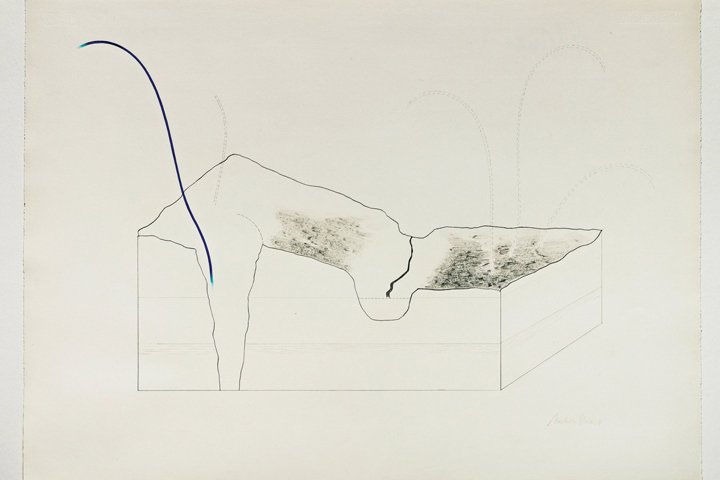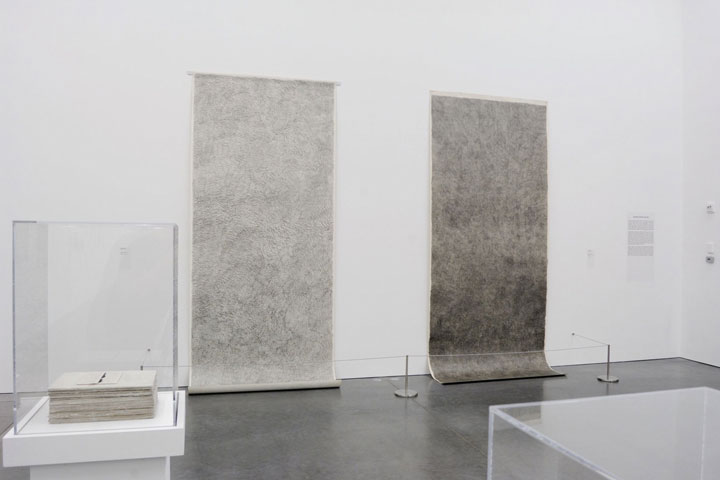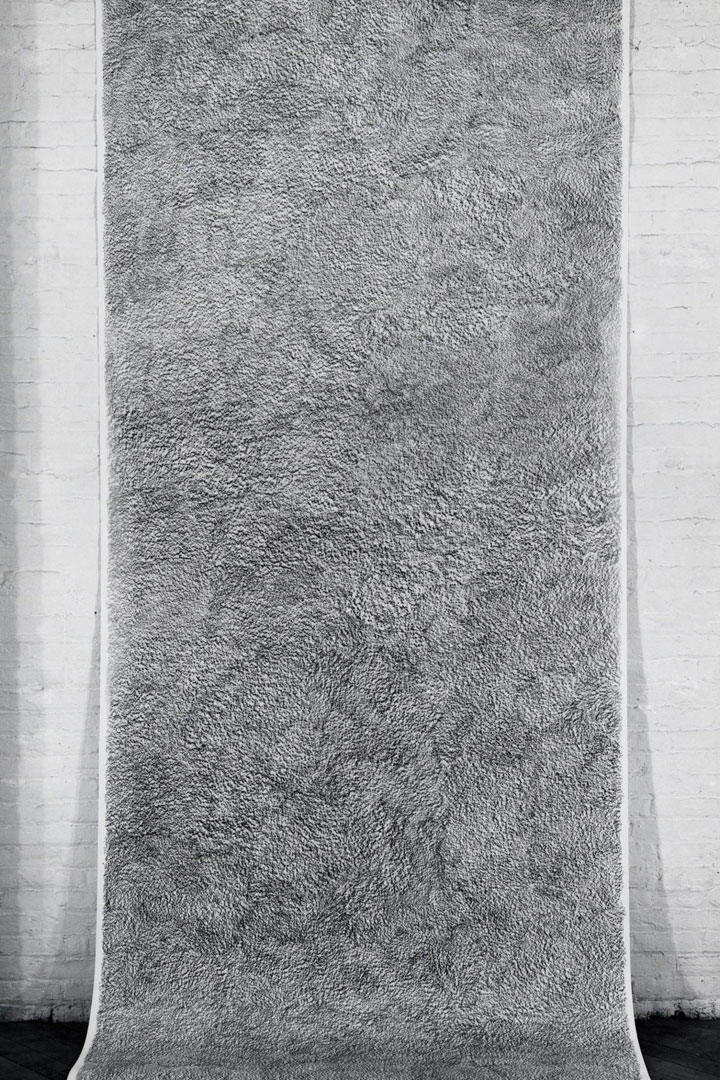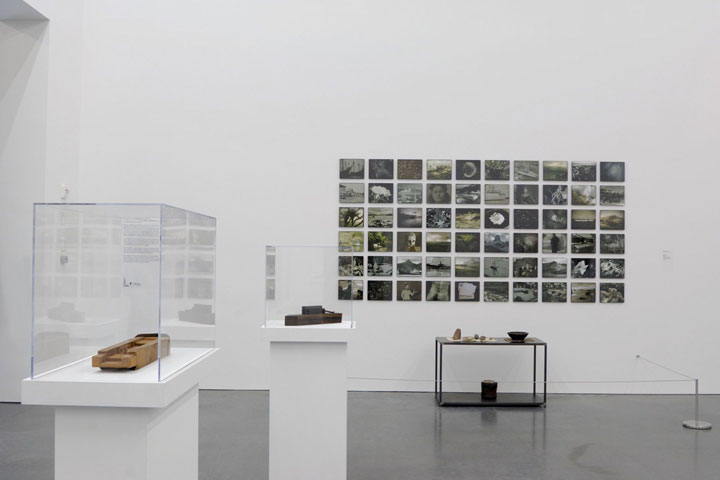
Michelle Stuart, Fault Line, 1969–70. Pencil and watercolor on paper, 22 x 30 inches. Image courtesy of the artist and Leslie Tonkonow Artworks + Projects.
Michelle Stuart: Drawn from Nature, currently on view at the Parrish Art Museum in Watermill, NY though October 27, displays the artist’s work from the late 1960s to the present day, including more than 50 sculptural assemblages, photographs and drawings.
Stuart has become internationally known for a body of work focused on her interest in the natural world and the cosmos. Her engagement with landscape and the natural environment as well as her use of unconventional materials permeate her work, but what is more interesting in the Parrish Art Museum’s exhibition is the artist’s major contribution to the medium of drawing. The works on view challenge preconceptions and encourage individuals to either expand their ideas or reinforce their own interpretations of what drawing is or can be.

Michelle Stuart: Drawn from Nature, Parrish Art Museum, installation view. Image courtesy of the Parrish Art Museum. Photo: Gary Mamay.
Among Stuart’s more literal drawings are monumental, frameless pieces like #1 Woodstock, NY and #5 Moray Hill, NY, two 12-foot-long paper scrolls covered in graphite marks from 1973–74, which cascade in front of the visitor from the gallery walls onto the floor. Similar to intense dark curtains enclosing the space, the pieces attract the spectator to discover their volumes, and texture, in an intimate confrontation of different scales: between man and paper scrolls, art object and immensurable landscapes.
Those labor-intensive works particularly struck Anna Lovatt, curator of the exhibition and specialist in drawing practices associated with conceptual and minimal art. She said: “Stand before them, and you really get a sense that those were works that had not been produced before and that redefined the way drawing was understood.”[i]

Michelle Stuart, #5 Moray Hill, NY, 1973. Graphite stick on muslin-backed paper, 144 x 62 inches. Image courtesy of the artist and Leslie Tonkonow Artworks + Projects.
The scrolls evince far from traditional notions of the drawn line as an expression of the artist’s personality. The artist often uses the “frottage” technique, where paper is laid over a surface and rubbed with graphite so that the underlying texture becomes imprinted upon it. In other works she uses non-traditional, organic material such as earth, wax, and seeds. Stuart’s drawing technique is sometimes more metaphorical, as when she represents lines occurring naturally from depth contrasts and horizons in photographic compositions.
Curator Cornelia Butler, now chief curator at the Hammer Museum in Los Angeles, points out that not only did Ms. Stuart “incorporate the earth into her drawings,” but she also “brought drawing into the landscape.”[ii]
The exhibition concludes with Stuart’s recent photographic grids composed of vintage and original inkjet prints of various natural formations, alongside metal tables containing natural and handmade artifacts which serve almost as a reliquary, or better, an elegant homage to biodiversity.

Michelle Stuart: Drawn from Nature, Parrish Art Museum, installation view. Image courtesy of the Parrish Art Museum. Photo: Gary Mamay.
The process of viewing and understanding the work on view can be challenging, especially because interpretation materials are sparse. Labels are small and minimal in providing viewers with supplementary information, and there is just one wall text at the entrance of the gallery that briefly explain Stuart’s career and productivity. At the same time, I believe the Parrish Art Museum balances the artist’s aim with its responsibility as an institution to make the work accessible to the public, but also stimulating as an unconventional mind exercise that demands reflection. Stuart’s work stresses the ambiguity of what constitutes a drawing; those who visited the exhibition of her work must determine that for themselves.
–Martina Caruso, Registration & Development Intern
